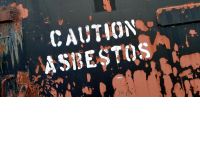
 01708 452000 Login
01708 452000 Login News
Recent News
News by Month
- April 2024
- January 2024
- October 2023
- August 2023
- April 2023
- January 2023
- October 2022
- July 2022
- April 2022
- January 2022
- October 2021
- July 2021
- April 2021
- January 2021
- October 2020
- July 2020
- April 2020
- January 2020
- October 2019
- July 2019
- April 2019
- January 2019
- October 2018
- July 2018
- April 2018
- January 2018
- October 2017
- September 2017
- July 2017
- April 2017
- January 2017
- October 2016
- July 2016
- May 2016
- April 2016
- March 2016
- January 2016
- August 2015
- June 2013
- November 2012
- March 2012
- November 2011
- July 2011
- June 2011
- May 2011
New HSE Campaign Prompts Tradespeople to Manage Asbestos Related Risks

In March, the Health and Safety Executive (HSE) launched a new campaign to remind those working in the construction trades to manage asbestos related risks. Despite the fact that asbestos was completely banned by 1999, there are still 5,000 asbestos related deaths every year. The issue is that asbestos can still be present in any building that was built or refurbished before the year 2000.
Despite the fact that asbestos was completely banned by 1999, there are still 5,000 asbestos related deaths every year. The issue is that asbestos can still be present in any building that was built or refurbished before the year 2000.
What is the problem with asbestos?
Asbestos fibres are microscopic, which makes it impossible to see them with the naked eye. When the fibres are inhaled, they can cause serious diseases, such as asbestosis, mesothelioma, asbestos-related lung cancer and pleural thickening. All these diseases are connected with symptoms that can take many years to develop. Sadly, once diagnosed, it is often too late to cure them.Asbestos exposure remains the single greatest cause of work-related deaths in Great Britain.
Anyone undertaking repairs or refurbishment works, especially in houses, is considered at a higher risk of disturbing asbestos. Tradespeople such as builders, carpenters, electricians, joiners, plasterers, plumbers and roofers are amongst those being encouraged through the new HSE campaign to take the risks of asbestos seriously.
‘Asbestos and You’
‘Asbestos and You,' is the name of the HSE campaign which aims to target all tradespeople, with a special focus on younger workers who have recently joined the most affected industries.
In particular, HSE is eager to reach those who began their careers from the year 2000, after asbestos was fully banned, so they can educate them in the fact that the risk has not disappeared.
Facts about asbestos
There are over 5,000 products known to contain asbestos. It is a naturally occurring fibre that was widely used in construction and other industries from the 1950s until it was totally banned in 1999.
Blue asbestos (crocidolite) and brown asbestos (amosite) were banned in 1985, followed by the most commonly found type, white asbestos (chrysotile), in 1999.
Before asbestos was found to be dangerous, it was used in buildings as roofing, flooring and insulation. It was also sprayed on walls and ceilings as a decorative finish.
Asbestos that is left undisturbed poses little risk. It is only when it is damaged or disturbed without the correct measures in place that its microscopic fibres can be released into the air and inhaled into the lungs, causing damage to their lining and leading to a range of diseases.
This is why it's so important for tradespeople to be aware of the potential for asbestos to be present, particularly if refurbishment or demolition works are planned.
Whilst there is no way to tell simply by visual inspection or by smell whether a material contains asbestos, there are certain materials or decorative finishes that may be more likely to contain asbestos. This is why the HSE campaign to educate tradespeople really is so important.
Further information
You can visit the HSE ‘Asbestos & You' campaign website to learn more about the campaign and how you can support it.There is a new downloadable Quick Guide for Trades, and an Introductory Guide to Asbestos Essentials for managers and sole traders.
The Control of Asbestos Regulations 2012 aim to protect those who may be inadvertently exposed to asbestos fibres during their everyday work.




